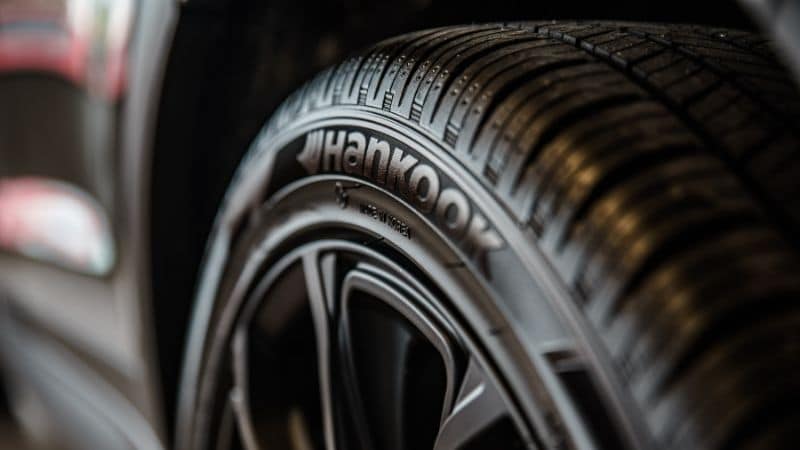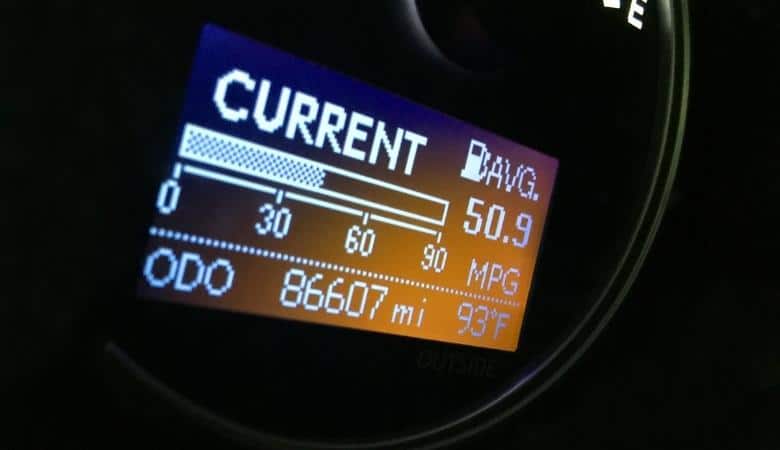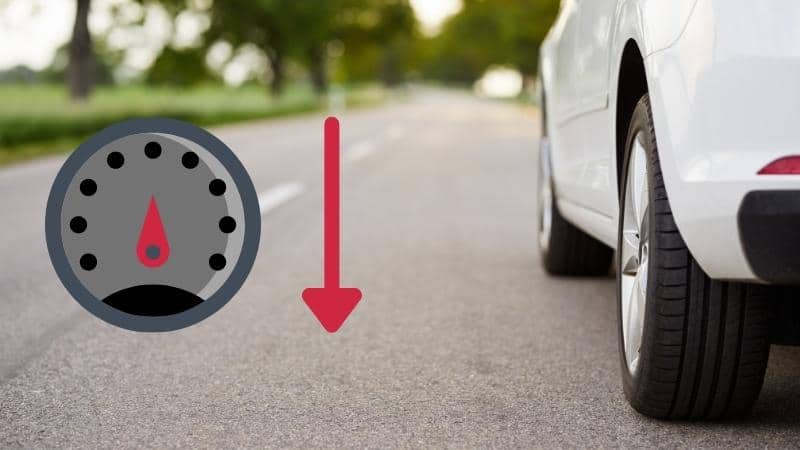Your old tires worn out so you decided to get a new set for your vehicle.
But to your surprise, when checking your gas mileage you realize that it has dropped since you put on the new tires. Your car now consumes more gas…
You’re wondering; how is that possible?
Though it is hard to believe, the truth is that new tires will affect your gas mileage and not in a good way. New tires will drop your gas mileage due to having better treads. The treads on your new tires will create more rolling resistance than the old ones, thereby negatively affecting your gas mileage.
Luckily this won’t last forever though. As by the time you have driven in your new tires your gas mileage will level out at a more normal range again.
Read on to learn more about rolling resistance, why more of it increases fuel consumption, and what you can do to reduce fuel consumption as much as possible.
What is Rolling Resistance?
Pressing down on the gas pedal of your vehicle will transfer energy from your engine, through your drivechain, into your wheels and pushing your vehicle forward through the friction created between your tires and the ground.
As you can see, there are multiple factors that the car has to overcome in order to move. One such factor includes tire rolling resistance.
Tire rolling resistance refers to the abovementioned energy needed by your car to be conveyed to your vehicle tires to keep it moving at a consistent speed. Precisely, tire rolling resistance can be defined as the power needed to maintain the rolling of your car tires.
Hysteresis is one of the main causes of rolling resistance. Primarily, the process of hysteresis involves the loss of power at any time a tire completes its roll. This loss of power must be overcome by the engine of your car and thus results in a drop in gas mileage.
Why Rolling Resistance May go up With New Tires
As stated earlier, new tires usually leads to higher rolling resistance because the rubber in the treads has better grip, and hence that, causes additional resistance as the car rolls on the ground.
This higher resistance forces the engine of your car to burn more fuel in order to push the car forward at the same speed.
Is Tire Rolling Resistance Preventable?
It is important to know that you cannot prevent tire rolling resistance. As long as your car tires contact the road, it will always occur. Precisely, it is a scientific fact that can neither be escaped nor stopped. Nevertheless, it can be minimized.
Since tire rolling resistance occurs due to hysteresis, it is possible to design car tires using thread compounds specifically made to offer huge resistance to pressure and heat generation. Having been made to diminish deflection of the tire, you may look ahead to benefit from minimal power loss. Tires designed in this manner are referred to as low rolling resistance tires.
If you care about your car’s gas mileage and are ready to do all that you can to improve it, you should seriously target investing in low rolling resistance tires next time you wish to replace your tires.
Most probably, you will note that these tires offer you the difference required to uphold decent gas mileage. Even though these tires are more expensive, you will often compensate for fuel savings.
The determining factor here is how often and characteristically you drive, but to a great extent, you will compensate for the friendly fuel economy offered by this type of tire.
Benefits of Using Low Rolling Resistance Tires

Low rolling resistance is the great investment you can do if you wish to optimize your car’s fuel economy.
In fact, the United States Department of Energy Research reveals that if you use low rolling resistance tires, you save more than 8% of your fuel compared to using regular tires.
Such savings of fuel may sound insignificant, but they quickly add up over time leading to considerable fuel saving in both waste and spending.
Are There Any Reasons Not to Use Low Rolling Resistance Tires?
Like with anything else, using low rolling resistance tires has a potential downside. From their design, these tires wear down faster than normal tires, does not have the same level of grip and causes a bit more tire noise compared to “regular” tires.
There are hopes that new technological advancements will curb this problem. However, as of now, it’s a factor that should not be ignored. Low rolling resistance tires are better when it comes to fuel economy, but not as good when it comes to grip, road noise, and tire life.
Saving Money With Low Rolling Resistance Tires
As we had said earlier, fuel savings can help you make up for the expenses you may incur on low rolling resistance tires. When these tires first entered the market, they could cost more than conventional tires of the same size.
This is not new as new technologies are more expensive when they first enter the market. With time, as the technology became more widespread, the price went down and became more budget-friendly to people. The same is true with low rolling resistance tires.
Today, other types of tires command a higher price tag than low rolling resistance. However, many tire brands can still be acquired at a sensible price to the driver. The difference is brought about by the type of rubber compound and other materials used to make the tire.
Therefore, you should expect to pay for more specially designed models. So consider such factors when buying low rolling resistance tires.
How to Improve Gas Mileage

Since you know the adverse effects of new tires on gas mileage, let’s see how you can improve your gas mileage.
1. Check Your Tire Pressure Regularly
Underinflated tires will make your vehicle use about 3% more fuel than usual. Apart from that, such tires will make your wheels wear out faster. Therefore, make it a habit to check your tires regularly to ensure that they are in good condition and well inflated.
2. Remove Clutter
If the inside of your car looks like you live there or you don’t like cleaning it, you will be subjecting your gas mileage to suffering.
Therefore, you should always go through your car and get rid of everything that should not be there, such as shoes, clothes, roof racks, backpacks and so on. Doing so will improve your vehicle’s performance.
3. Don’t Idle
Most modern vehicles feature a start-stop system that turns the engine off when the car is not moving. This helps to improve the fuel effectiveness as an idle vehicle uses more fuel than starting your car.
4. Service Your Vehicle
Regular repair and maintenance can help in improving your vehicle’s performance and your gas mileage.
You should make sure that your car is serviced on a regular basis to avoid spark plugs, poor connections, and dirty filters.
Conclusion
If you want to continue having optimal gas mileage on your vehicle, you should think extra before replacing your tires. Low rolling resistance tires can help prevent unnecessary fuel loss and provide better gas mileage.
Also, do not forget the above factors to ensure you save the maximum on gas whether you have low rolling resistance tires or not.
Hi, my name is Niklas, the head content creator & CEO of Whirling Wheelz. I am very interested in vehicles of all kinds, mainly cars. I have a car mechanics degree from high school and a big hobby of mine is to follow the WRC (World Rally Championship) both online and through travel.


